Well, the Sin City Newbies are back, this time driven by son #1's desire to catch the Cartoon Network, which has so far eluded his FTA dragnet. I was hoping to get a few more days of peace before tackling another satellite project, but eager #1 went ahead a grabbed a 4DTV receiver off of eBay for $65.00. This he did after hearing that there are providers out there who are offering C-Band channels ala-carte. But we certainly are newbies, and everything we know on the subject comes from SatelliteGuys.us.
I had told him that the wires around the BUD seem to have been altered (as in "cut") some time ago, so getting the old dish up and running would require more of my time. But what the heck, dad's time is cheap, as far as he is concerned, so here we are again.
In photo number 476 below, we see the back of the General Instrument DSR410 DS. I assume that a wire from the BUD needs to be connected to the far left jack, just above the little dish icon. Looking right to the middle of the panel, you can see two sets of red, white, and yellow RCA jacks. Although the letters are upside down, it appears that a previous owner has used a Sharpie to write "TV" next to the upper set, and "VCR" next to the lower set. If labeled correctly, these jacks are self-explanatory. To the right of those we find two RF jacks, for those who need them, and a single RF jack, next to an icon of a bent RF wire. Maybe that last RF connector is for passing the original signal on through to another receiver. And the last connector to the right is obviously for a telephone wire.
Meanwhile, back on the roof, photo 477 shows the BUD in profile. It may be old, but the dry climate here is good for metal.
Photo 478 gives a close-up look at the three wires coming out of the big can, which I will guess is a BUD version of an LNBF. True? In the photo, I have labeled the wires A, B, and C, for reference. The shadow and position of the cable makes B look bigger, but I can assure you that A and B are the same diameter. C looked and felt a little smaller than A and B.
Photo 479 shows another wire, labeled "D", joining the bundle as we head on down the mast. I was told in a previous thread that the little assembly at the end of the D wire is called an "actuator". Please correct me if I am using the wrong word. Note that if the dish is moved any more to the East, the D wire will be sliced in two (indicated by the "Ouch!").
In photo 481, the plot thickens: Somebody cut the A wire and hijacked it, introducing a different signal by way of a new wire labeled "E". If wire A had carried the main signal down to the receiver, this wire E was now the boss. BTW: Notice that the original installer took no chances; there are probably six lock washers between the nut and the large washer on the bottom. Note: the concept "main signal" is a newbie idea.
In photo 482, I just had to find the source of wire E. This view is from the North, taken with a short telephoto from the ground. Don't be fooled by wire A suddenly pointing upward. I laid the wire bundle down before climbing off of the roof... photo 481 is the best view to understand what was going on. Back to 482, notice that wire E is going up under the flashing and heading West. It then goes around the corner heading South on the West wall.
Photo 483 probably isn't necessary, but I thought I'd let you all have a peak at the rear of our HughesNet dish, which is 36 inches wide and 26 inches high.
Photo 484 shows where wire E finally comes down from the roof, and photo 485 shows where wire E disappears under the house through a messed up little vent that I had not noticed before. We don't go around that side of the house.
Evidently, some years after the BUD was installed, DirectTV showed up at the door and sold themselves to the then current owner. The DirectTV installer brought two wires down, running one through a new hole in the living room wall, and the other under the house. By going under the house, he cut diagonally across and out into that unused alley, emerging as what I have now labeled wire "E". You have seen the rest; he followed the roof line, chopped into wire A, and presto! DirectTV was now also in the rear family room as well as the front living room. I guess these full time installers can be clever critters when they want to be (no offense meant to any of you in this forum).
Heading East from photo 482, we see in photo 486 that the original installer kept the bundle flat and always oriented the same; A, B, C, D, from bottom to top... except that now A has been hijacked by E.
Photo 487, why did it all have to end this way??
Photo 488 shows the original path (in yellow) of the C-band wire bundle, three more feet East, then 10 feet down to a hole in the family room wall.
The culprit: Photo 490 shows a new wire, "F" coming down only 5 feet East of where the bundle used to come down. This installer didn't want anyone accidentally hooking into the old C-band bundle (which DirectTV had already tapped into) and getting confused. So he fixed the potential problem by hacking out 13 feet of wire bundle from the outside and who knows how much from the inside of the house. Who was this masked man??
Photo 491 shows the Grand Central Station of all of our TV wiring. It is the SouthEast corner of the house. Here we find wire F coming down and mixing it up with all the other wires. But since wire F is black, it sticks out from the pack, and you can clearly see it running down into the ground where it eventually ends up in a large junction box near the sidewalk. Our culprit: Larry the Cable Guy!!
Now how on earth do I make this mess work for my son's 4DTV receiver??
I had told him that the wires around the BUD seem to have been altered (as in "cut") some time ago, so getting the old dish up and running would require more of my time. But what the heck, dad's time is cheap, as far as he is concerned, so here we are again.
In photo number 476 below, we see the back of the General Instrument DSR410 DS. I assume that a wire from the BUD needs to be connected to the far left jack, just above the little dish icon. Looking right to the middle of the panel, you can see two sets of red, white, and yellow RCA jacks. Although the letters are upside down, it appears that a previous owner has used a Sharpie to write "TV" next to the upper set, and "VCR" next to the lower set. If labeled correctly, these jacks are self-explanatory. To the right of those we find two RF jacks, for those who need them, and a single RF jack, next to an icon of a bent RF wire. Maybe that last RF connector is for passing the original signal on through to another receiver. And the last connector to the right is obviously for a telephone wire.
Meanwhile, back on the roof, photo 477 shows the BUD in profile. It may be old, but the dry climate here is good for metal.
Photo 478 gives a close-up look at the three wires coming out of the big can, which I will guess is a BUD version of an LNBF. True? In the photo, I have labeled the wires A, B, and C, for reference. The shadow and position of the cable makes B look bigger, but I can assure you that A and B are the same diameter. C looked and felt a little smaller than A and B.
Photo 479 shows another wire, labeled "D", joining the bundle as we head on down the mast. I was told in a previous thread that the little assembly at the end of the D wire is called an "actuator". Please correct me if I am using the wrong word. Note that if the dish is moved any more to the East, the D wire will be sliced in two (indicated by the "Ouch!").
In photo 481, the plot thickens: Somebody cut the A wire and hijacked it, introducing a different signal by way of a new wire labeled "E". If wire A had carried the main signal down to the receiver, this wire E was now the boss. BTW: Notice that the original installer took no chances; there are probably six lock washers between the nut and the large washer on the bottom. Note: the concept "main signal" is a newbie idea.
In photo 482, I just had to find the source of wire E. This view is from the North, taken with a short telephoto from the ground. Don't be fooled by wire A suddenly pointing upward. I laid the wire bundle down before climbing off of the roof... photo 481 is the best view to understand what was going on. Back to 482, notice that wire E is going up under the flashing and heading West. It then goes around the corner heading South on the West wall.
Photo 483 probably isn't necessary, but I thought I'd let you all have a peak at the rear of our HughesNet dish, which is 36 inches wide and 26 inches high.
Photo 484 shows where wire E finally comes down from the roof, and photo 485 shows where wire E disappears under the house through a messed up little vent that I had not noticed before. We don't go around that side of the house.
Evidently, some years after the BUD was installed, DirectTV showed up at the door and sold themselves to the then current owner. The DirectTV installer brought two wires down, running one through a new hole in the living room wall, and the other under the house. By going under the house, he cut diagonally across and out into that unused alley, emerging as what I have now labeled wire "E". You have seen the rest; he followed the roof line, chopped into wire A, and presto! DirectTV was now also in the rear family room as well as the front living room. I guess these full time installers can be clever critters when they want to be (no offense meant to any of you in this forum).
Heading East from photo 482, we see in photo 486 that the original installer kept the bundle flat and always oriented the same; A, B, C, D, from bottom to top... except that now A has been hijacked by E.
Photo 487, why did it all have to end this way??
Photo 488 shows the original path (in yellow) of the C-band wire bundle, three more feet East, then 10 feet down to a hole in the family room wall.
The culprit: Photo 490 shows a new wire, "F" coming down only 5 feet East of where the bundle used to come down. This installer didn't want anyone accidentally hooking into the old C-band bundle (which DirectTV had already tapped into) and getting confused. So he fixed the potential problem by hacking out 13 feet of wire bundle from the outside and who knows how much from the inside of the house. Who was this masked man??
Photo 491 shows the Grand Central Station of all of our TV wiring. It is the SouthEast corner of the house. Here we find wire F coming down and mixing it up with all the other wires. But since wire F is black, it sticks out from the pack, and you can clearly see it running down into the ground where it eventually ends up in a large junction box near the sidewalk. Our culprit: Larry the Cable Guy!!
Now how on earth do I make this mess work for my son's 4DTV receiver??
Attachments
-
 476.JPG99.7 KB · Views: 347
476.JPG99.7 KB · Views: 347 -
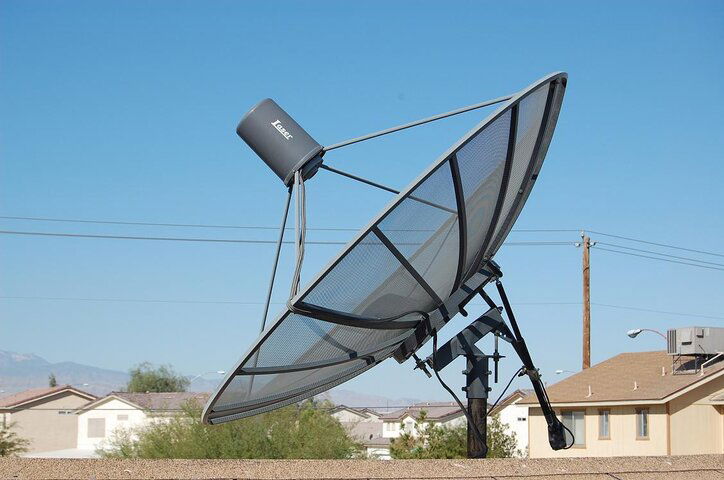 477.JPG93.1 KB · Views: 362
477.JPG93.1 KB · Views: 362 -
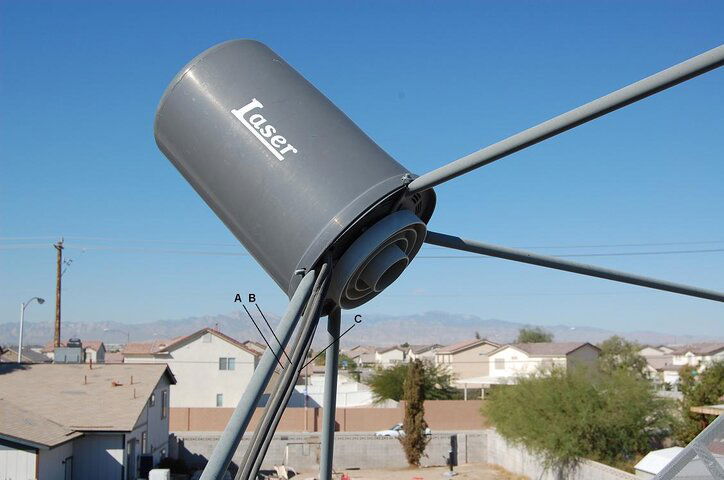 478.JPG74.9 KB · Views: 282
478.JPG74.9 KB · Views: 282 -
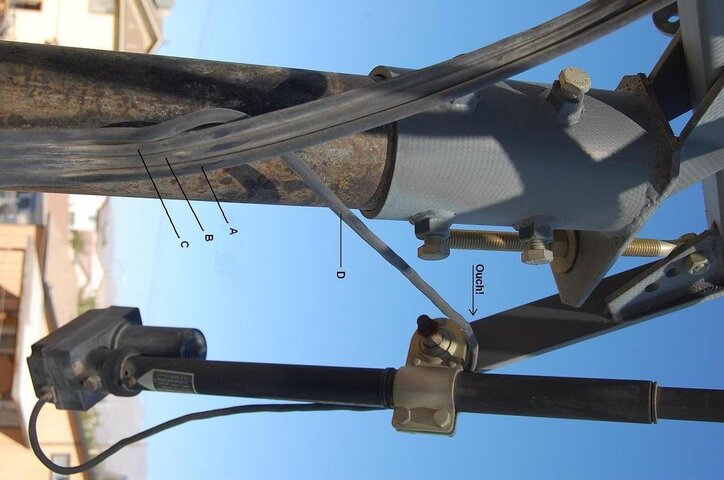 479.JPG79.6 KB · Views: 303
479.JPG79.6 KB · Views: 303 -
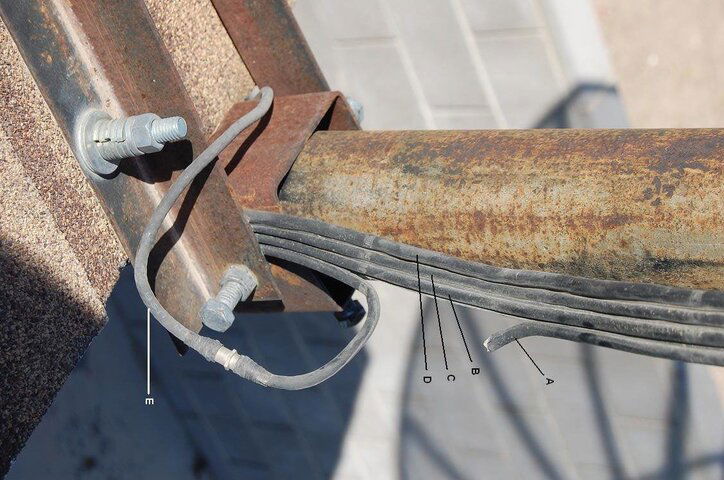 481.JPG143.6 KB · Views: 323
481.JPG143.6 KB · Views: 323 -
 482.JPG84 KB · Views: 280
482.JPG84 KB · Views: 280 -
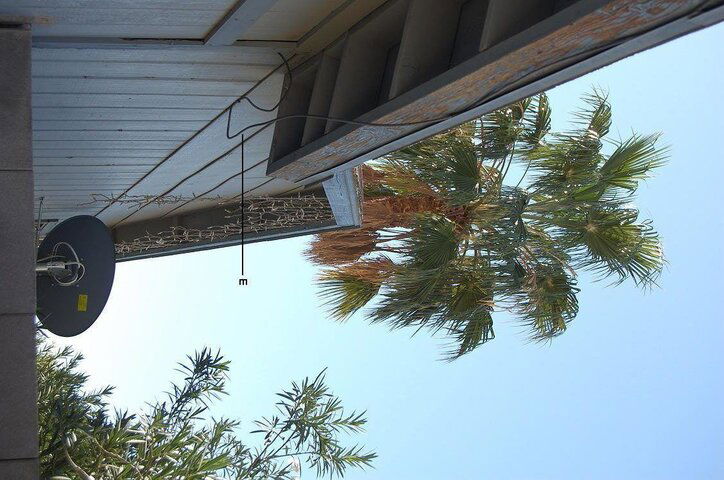 483.JPG150.3 KB · Views: 275
483.JPG150.3 KB · Views: 275 -
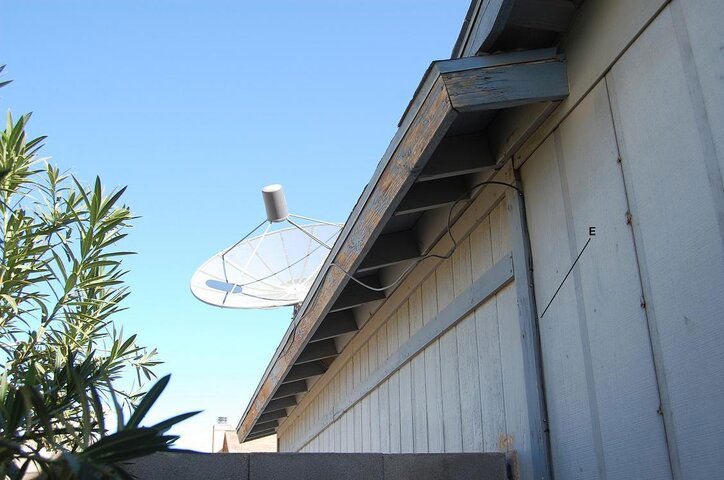 484.JPG106.5 KB · Views: 247
484.JPG106.5 KB · Views: 247 -
 485.JPG147.9 KB · Views: 278
485.JPG147.9 KB · Views: 278 -
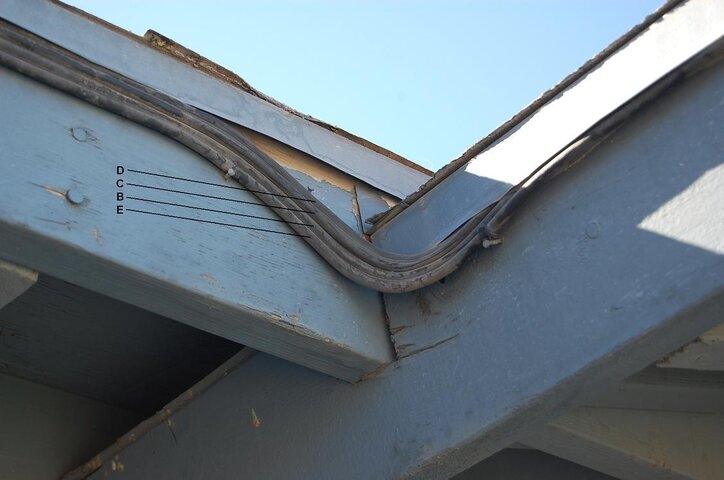 486.JPG67.5 KB · Views: 297
486.JPG67.5 KB · Views: 297 -
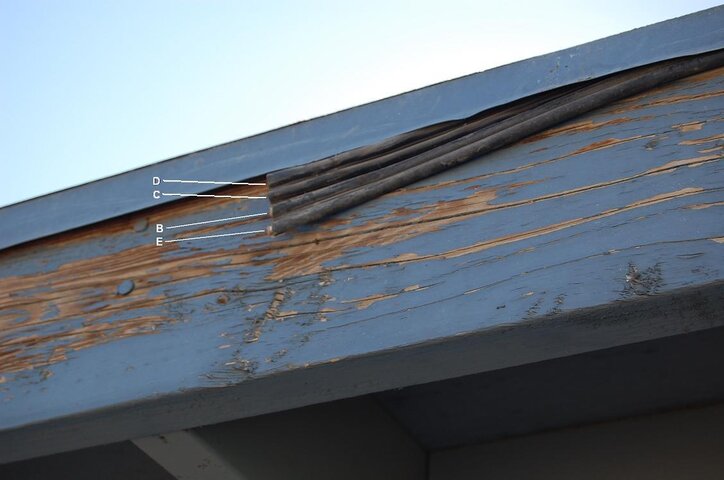 487.JPG68.3 KB · Views: 280
487.JPG68.3 KB · Views: 280 -
 488.JPG69.4 KB · Views: 251
488.JPG69.4 KB · Views: 251 -
 490.JPG106.4 KB · Views: 277
490.JPG106.4 KB · Views: 277 -
 491.JPG105.6 KB · Views: 297
491.JPG105.6 KB · Views: 297

